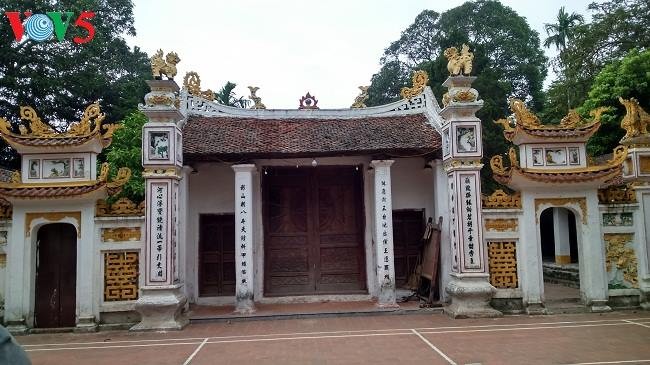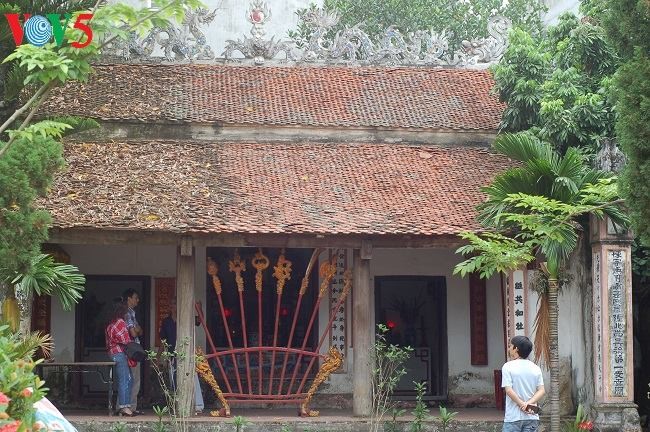(VOVWORLD) - Ta Thanh Oai village is famous for its learning tradition and home of many talents who have contributed greatly to the country. This is also the birthplace of well-known poets of the Thang Long Imperial City, the former name of Hanoi.
 The three-door gate of Hoa Xa Communal House. (Lan Anh/VOV5) The three-door gate of Hoa Xa Communal House. (Lan Anh/VOV5) |
The village, formerly known as Ke To, is in Hanoi’s outlying Thanh Tri district.
During the feudal period, Ta Thanh Oai was recognized as a doctoral village with 12 doctors. It also had 27 people who passed the provincial level examination called “Huong Cong” during the Le dynasty between the 14th and 17th centuries, and 10 people with a Bachelor’s Degree under the Nguyen dynasty between the 18th and 19th centuries.
Luu Xuan Long, a village elder, told VOV: “The village’s 12 doctors belonged to the Nguyen and Ngo clans. The Ngo clan had two doctors: Ngo Thi Si and Ngo Thi Nham. Ngo Thi Si was in charge of guarding the frontiers in the north while Ngo Thi Nham was a famous scholar with profound knowledge and was given great responsibilities by the King. We are proud of our ancestors."

Ta Thanh Oai village gate is engraved with four words which mean the gate of
Thuong Phuc village.
|
To encourage villagers to study, Ta Thanh Oai village created a study encouragement mechanism under which anyone who achieves the doctoral title will be awarded 40 hectares of land.
The first doctor in the village was Mr. Nguyen Chi, who gained a doctorate degree in the examination in 1453 under the reign of King Le Nhan Tong
According to Nguyen Van Dan, the guardian of the Nguyen clan’s worshiping house, “the Nguyen clan made great contributions. They taught their children the importance of learning, human behavior, and that good will win against evil. All descendants are named Nguyen Van, which means to encourage them to study literature rather than martial arts.”
Ta Thanh Oai is well-known as the village of literature of the former imperial city of Thang Long.
 The Ngo Clan’s House of Worship The Ngo Clan’s House of Worship |
Its laureates wrote many major literary works with the most typical writing “the School of Literature of Ngo clan”
Written in Chinese script, the works vary in genres: poetry, stories, narratives, deeds, petitions, and reports.
The Ngo clan’s writing consisted of a total of 36 book sets of which “Hoàng Lê nhất thống chí” (The Unification Records of the Imperial Lê) was one of the most renowned historical narratives. Ngo Thi Nham was the most talented poet in the Ngo Clan.
 The stone horse worshipped at Hoa Xa Communal House, Ta Thanh Oai village. The stone horse worshipped at Hoa Xa Communal House, Ta Thanh Oai village. |
Nguyen Kim Thi, the guardian of Hoa Xá Communal House of Ta Thanh Oai village, said: “Ngo Thi Nham was brilliant. He was a writer, a diplomat, and a military officer. He was sent to Qing Dynasty, China, as the King’s envoy. With profound knowledge, Ngo Thi Nham left many major literary works for later generations with “The Unification Records of the Imperial Le” his most outstanding work. It has then published into textbooks for students.”